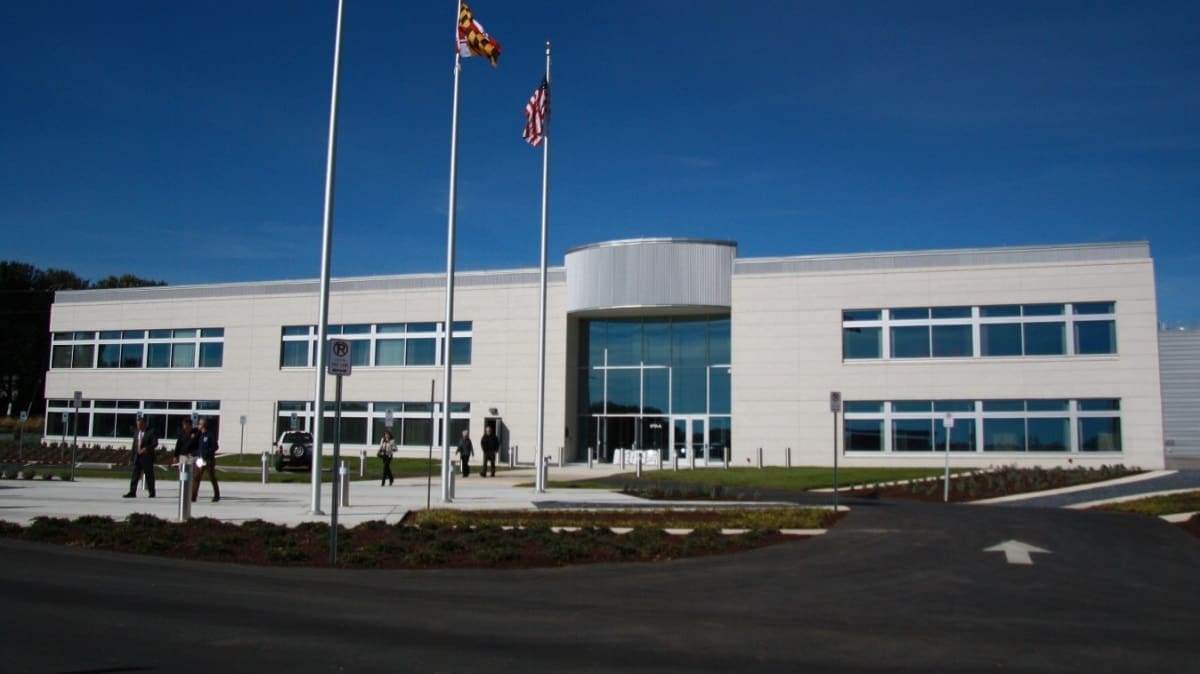Government
Optical LAN is a more secure and modern fiber-based network that exceeds local, state and federal government mission-critical needs. OLAN can offer 320:1 less attack surface, 6:1 fewer IT staff touch (Zero Trust Architecture), 90% reduction in material/space (It’s Green!) and at 20-50% lower costs.
Innovative field-proven solution for all agencies
Government networks struggle to keep pace with digital workplace advancements, and business agility progress, in the face of constantly growing cybersecurity threats. Meanwhile, network modernization, and sustainability efforts, are being negatively impacted by a constant state of change in agency leadership, mission and budget constraints. The time is now to break the legacy network design status quo.
Passive Optical Networking (e.g. PON, GPON, and/or 10 gigabit XGS-PON), also known as Passive Optical LAN, is a building and campus connectivity technology that flattens and simplifies network design. It reduces network vulnerabilities (i.e. shrinks the network attack surface) and is ideal for Zero Trust Architecture. It has centralized intelligence with software-defined management. PON lowers total cost of ownership for agencies and is proven across all government markets.
Quick Facts
- OLAN Flattens and Simplifies Networks
- It Reduces Network Vulnerabilities
- OLAN Lowers Total Cost of Ownership
- Software-Defined Centralized Architecture
- Proven Across All Government Markets
- Tellabs is the PON Innovation Leader
Key Benefits for Federal, State and Local Governments
Optical LAN is a smart choice that saves money
More and more Government agencies are seeing the dramatic advantages that Passive Optical LANs have over traditional copper-based infrastructure. With the Optical LAN solution (currently based on G-PON, 10 gigabit symmetrical XGS-PON and advanced Ethernet) added to the DoD Joint Interoperability Test Command (JITC) certification Approved Product List (APL) more than seven years ago, Tellabs has demonstrated that the solution meets the strict security, reliability and scalability requirements that power our government’s infrastructure. Tellabs Optical LAN solution is an innovative, field-proven and cutting-edge solution to the growing network complexities and green mandates that challenge every agency.
Optical LAN helps to enable ultra-reliable communications that meet the mission-critical needs of government. Many of the world’s largest telecommunications service providers trust Tellabs network solutions to provide their customers with reliable, quality services. More than three decades of engineering expertise and JITC-certified products make Tellabs an excellent partner to exceed the needs of modern government connectivity.
320:1 less attack surface
Optical LAN eliminates 1000s of IP addresses and reduces the number of telecommunication closet doors that require defending. OLAN offers best-in-class Network Access Control. It uniquely supports bi-directional encryption. The OLAN system ensures deterministic traffic with end-points isolation for end-to-end secure communications. Plus, fiber cabling eliminates electrical emanation and it integrates seamlessly with Infrastructure Protection Solutions.
6:1 fewer IT staff touch (Zero Trust Architecture)
Optical LAN offers reduced human touch with automated connectivity of users, devices, and services. Optical LAN is software defined networking technology that helps IT staff work more efficiently. OLAN increases speed to provision, monitor, troubleshoot and perform moves-adds-changes. It is easy to manage with centralized intelligence and management, plus policy-based global templates profiles for consistent policies/procedures that improves IT staff hiring, skill-set gaps and retention – a network design that maximizes Zero Trust Architecture.
90% reduction in material/space (It’s Green!)
Optical LAN reduces space and material required by equipment and cables. It can decrease the introduction of copper (precious metal), plastics and PVCs into buildings and campuses. Thus, its design can deliver tangible contribution to environmental initiatives. OLAN’s greater connectivity density in less footprint, materials and cost – along with a graceful migration to future 10G/40G technologies over today’s single-mode fiber infrastructure directly contributes to sustainability initiatives.
20-50% lower costs
Optical LAN lowers day-1 capital costs and substantially reduces year-over-year operational costs. OLAN eliminates the need for annual licenses and eliminates the 3-5 year Ethernet switch refreshes. Its simplicity helps lessen technical skillset gap and shortage with IT and Networking staff.
News Releases
Corporate news releases recognizing significant achievements of Tellabs operations, products, solutions and customers.
Case Studies
Hear directly from our customers about their successful installations, quantifiable benefits and sincere testimonials.
Events
Up-coming conferences, seminars and webinars where Tellabs products, solutions and people will be actively participating.
Blogs & Articles
Read these short, and regularly updated, opinion pieces covering contemporary industry and technology topics.
White Papers
Download our non-vendor specific overviews meant to help readers understand an issue, solve a problem, or make a decision.
Videos
Media to educate and advocate our products, technologies or services, and offer direct insight into our customer references and user case studies.
Passive Optical Networking
Network Modernization
Enterprise
Tellabs Optical LAN is a true enterprise centric solution that offers a better means of designing and operating networks inside buildings and across extended campuses.
Broadband
Tellabs 1000 MSAP (aka T1000, DMAX, AFC, UMC) is the industry’s only Broadband Digital Loop Carrier platform that converges legacy copper and modern fiber connectivity.
Technical Assistance Center
Address your questions and challenges quickly with our award winning TAC. Flexible support options to meet your needs.
Professional Services
From small projects to migrations to full turn key services, Tellabs is here to help.
Training
Preparation is the key to success. Get your team ready to plan, deploy and manage your Tellabs Network. Check our our Training Curriculum today!
Credentials
You worked hard in Training, now it’s time to show your new credentials off to the World through our Digital Credentialing Program!
Become a Partner
The Tellabs Advantage Partner Program is designed to offer our partners exceptional opportunities to grow your business, increase revenue and gain unique solution differentiation.
Find a Partner
For our end-customers, our Tellabs Advantage Partner Program offer best-in-breed services that match specific vertical markets and geographical regions with the end-customers exact needs in mind.
Leadership
Meet the Tellabs leadership team that represents diverse areas of expertise, and who are committed to exceeding the expectations of our employees, partners and customers.
Our Team
The Tellabs’ team is passionate in their pursuit of excellence in the office, their community and the greater industry.
Careers
Visit Tellabs’ online careers pages to see if there is a job opportunity that matches your ambitions. We offer excellent pay, benefits and career advancement possibilities.
Contact
Tellabs offer several easy options for contacting us. You can connect with us today via phone, email, online forms, or through social media channels.








